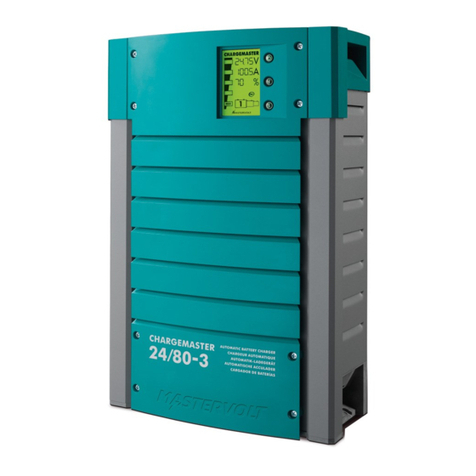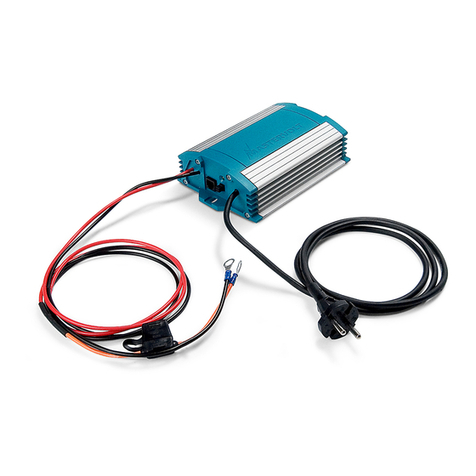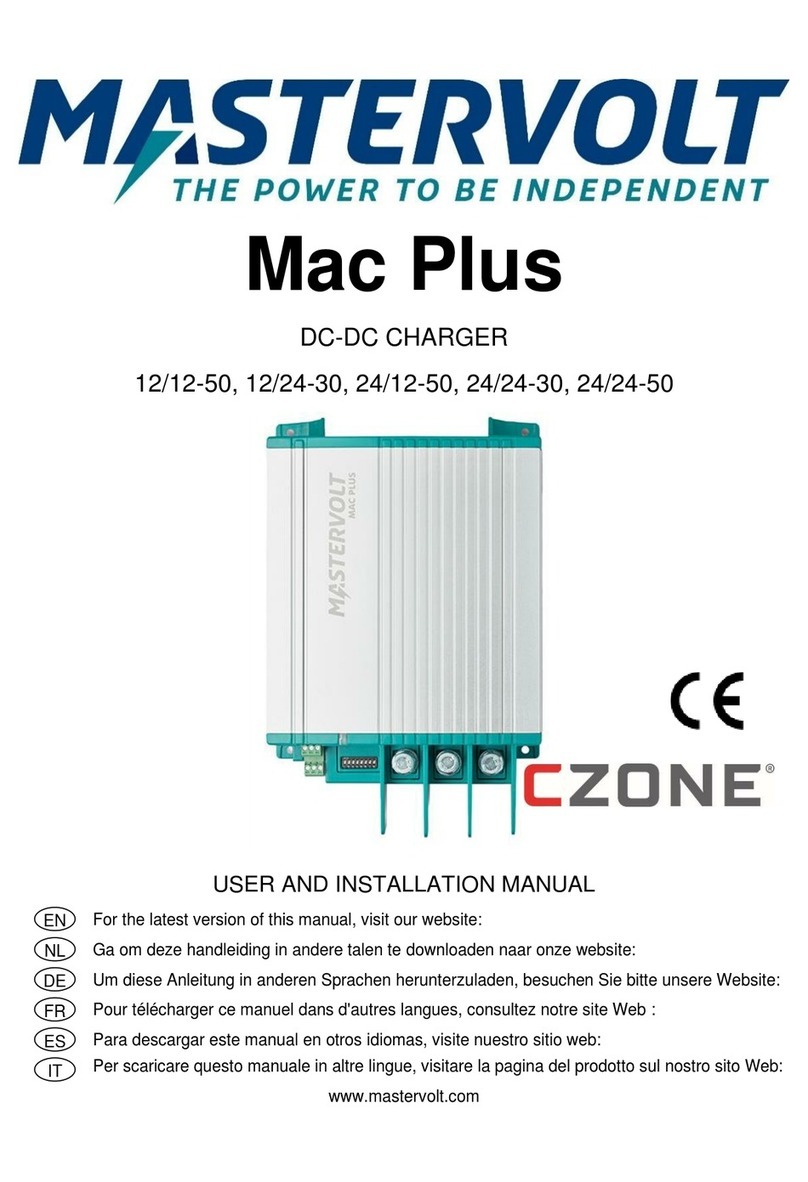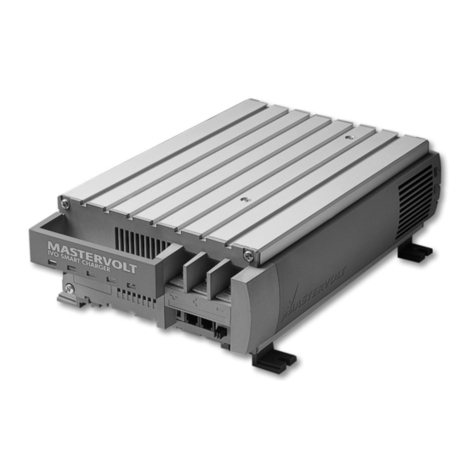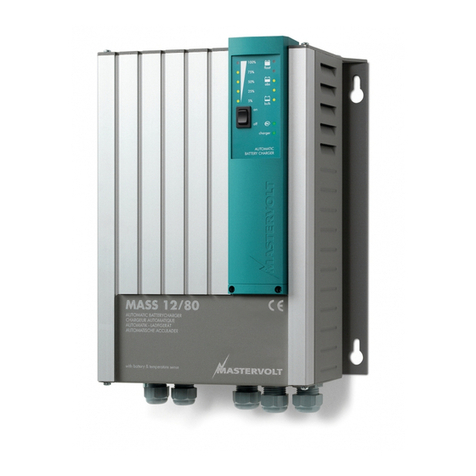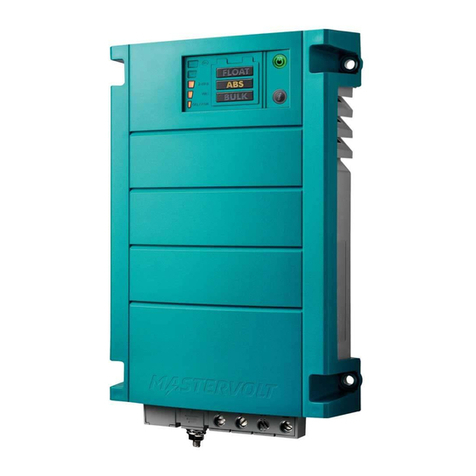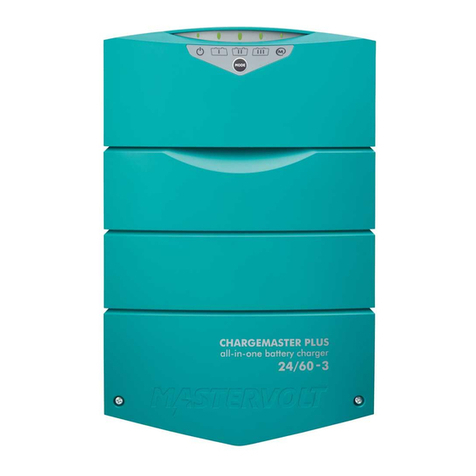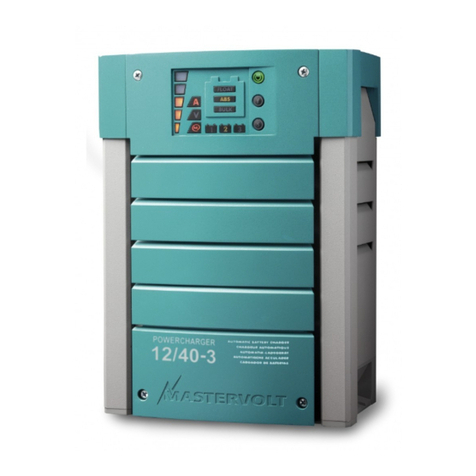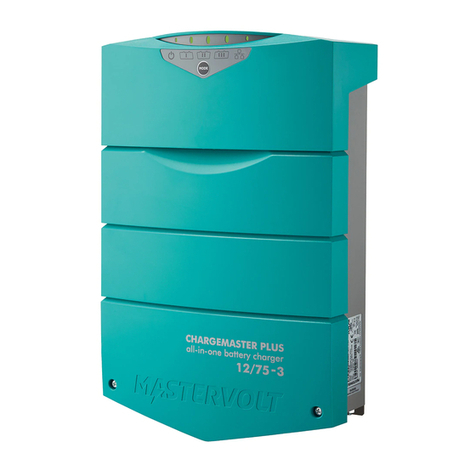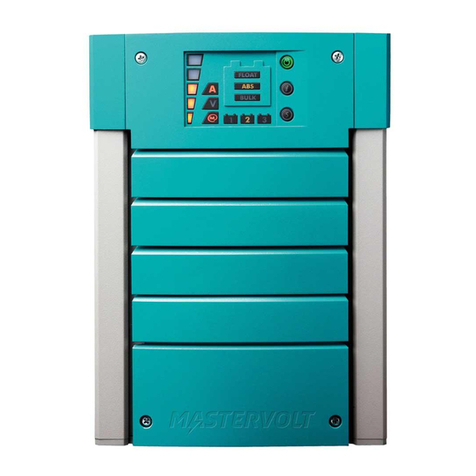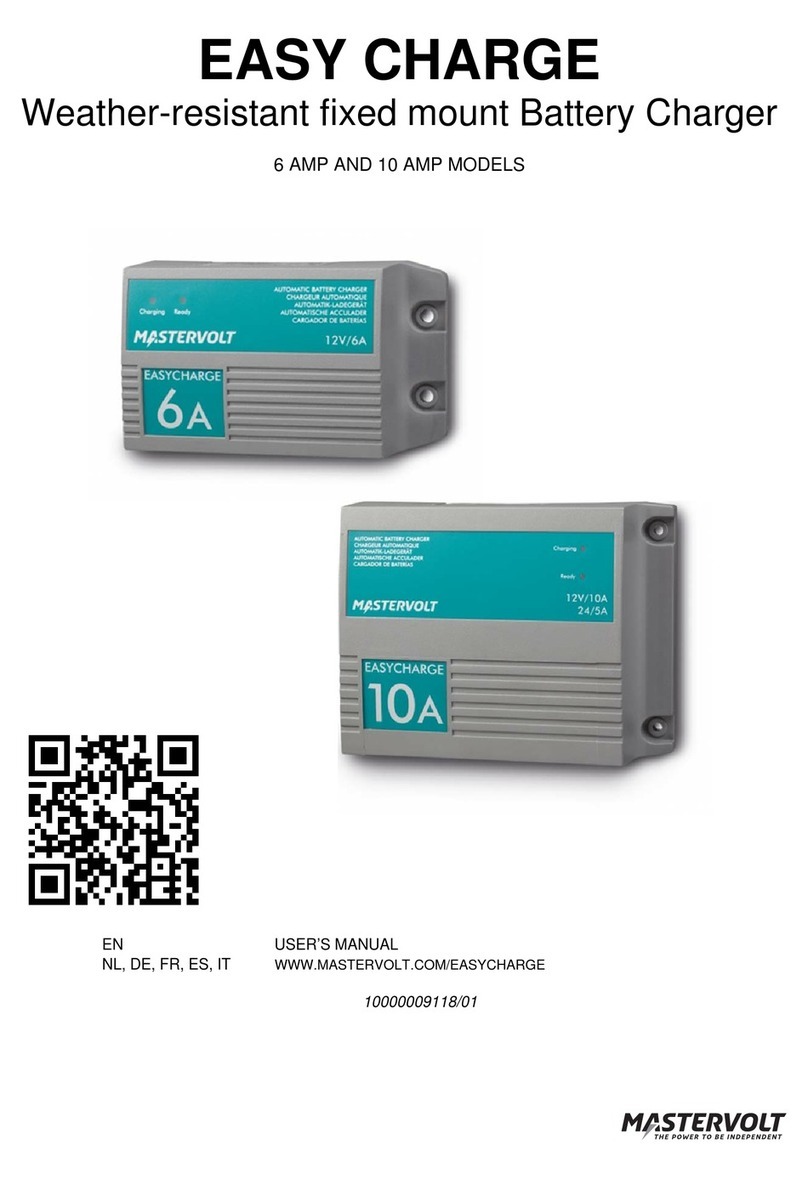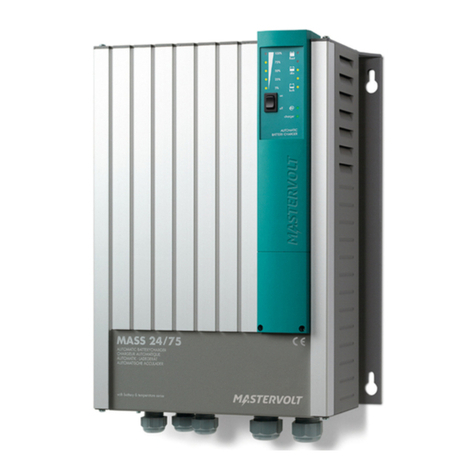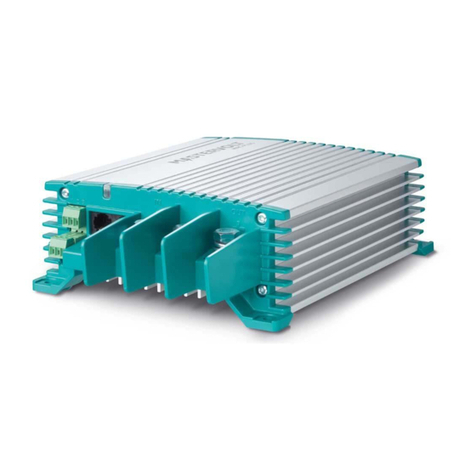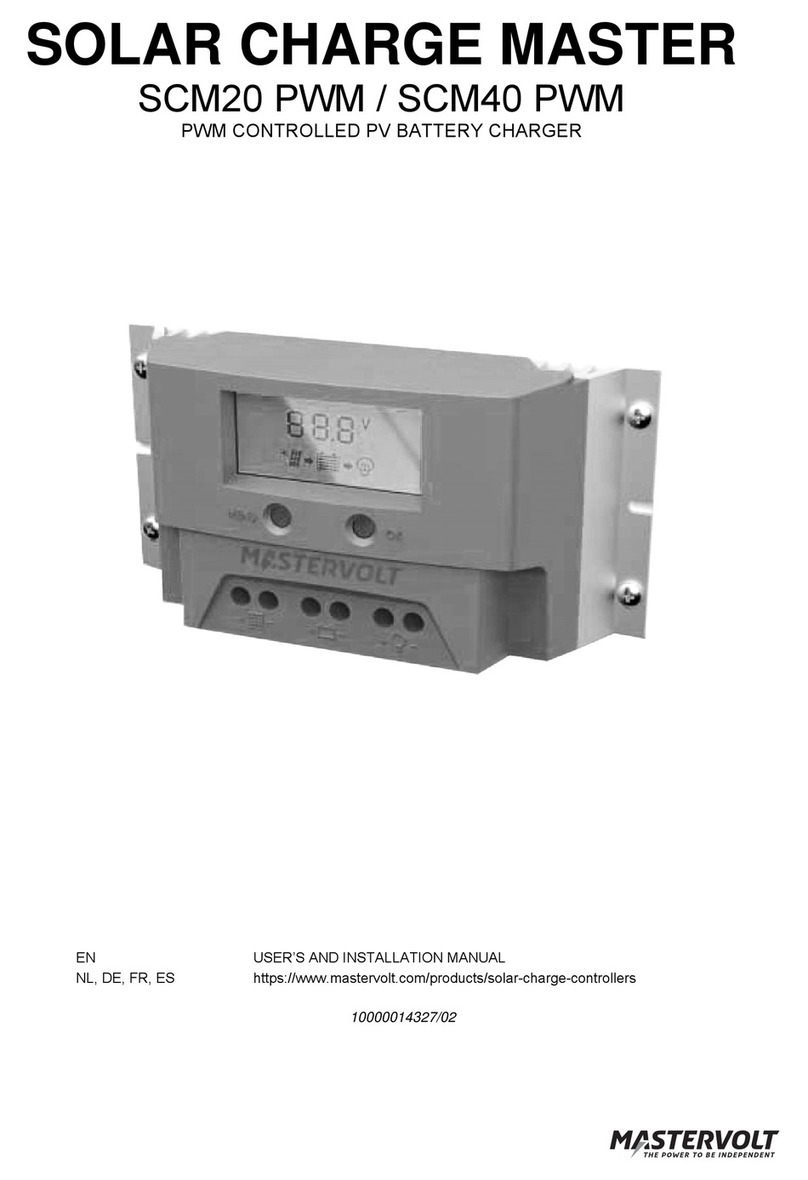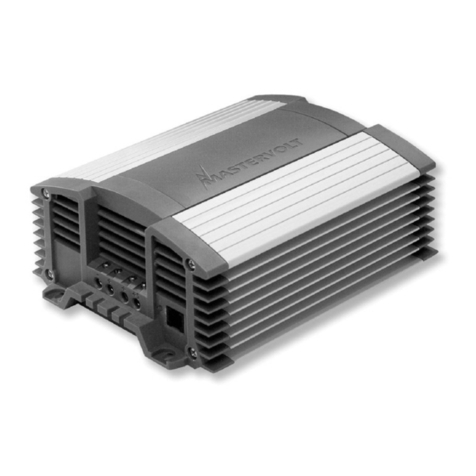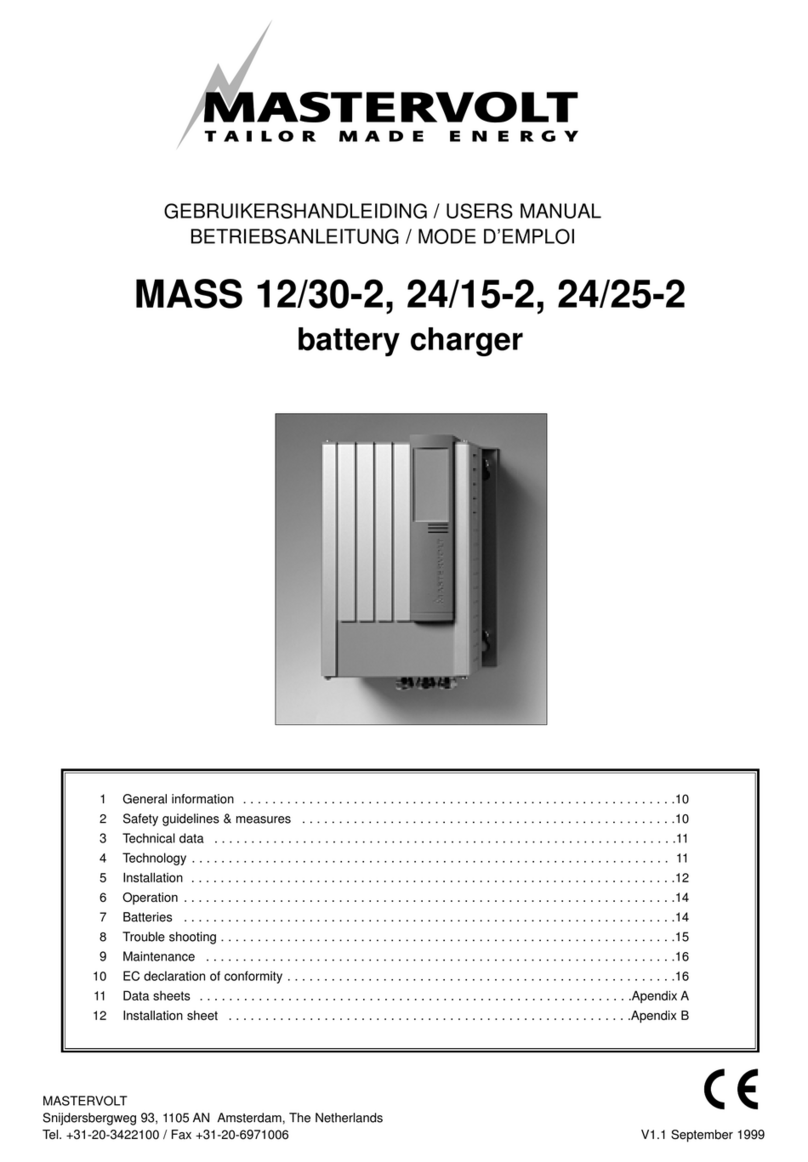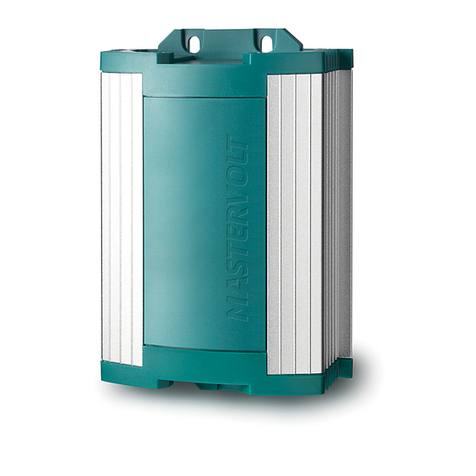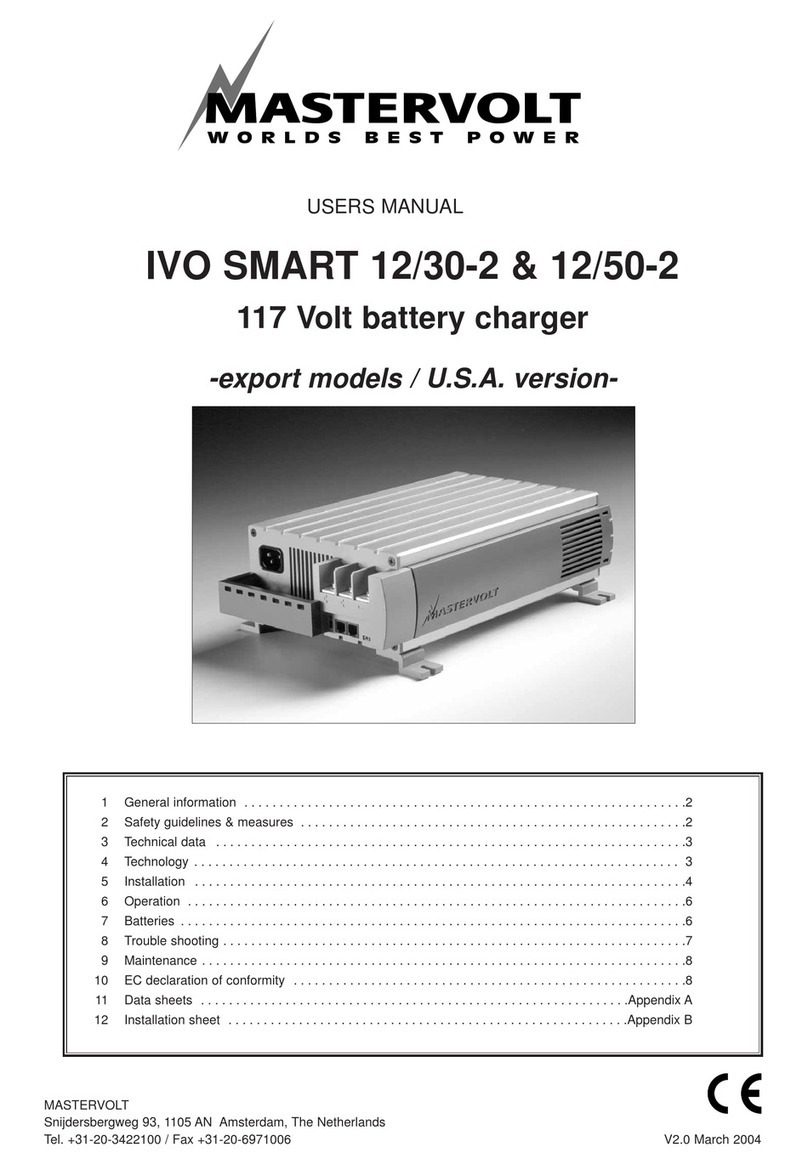INSTALLATION
8
3 INSTALLATION
During installation and commissioning of the
ChargeMaster, the important safety instructions are
applicable at all times.
3.1 UNPACKING
In addition to the ChargeMaster the delivery includes:
Mounting bracket to mount the ChargeMaster to a wall;
Battery temperature sensor;
MasterBus terminating device (see APPENDIX);
This User’s manual
Important Safety Instructions
After unpacking, check the contents for possible damage.
Do not use the product if it is damaged. If in doubt, contact
your supplier.
Check from the identification label (see section 1.4)
whether the battery voltage is the same as the nominal
output voltage of the ChargeMaster (e.g. 24V battery set
for a 24V battery charger).
3.2 ENVIRONMENT
Obey the following stipulations during installation:
The ChargeMaster is designed for indoor use only.
Ambient operating temperature: -25°C ... 60°C / -13°F
… 140°F (power de-rating above 25°C / 77 °F to
decrease the internal temperature).
Humidity: 0-95% non condensing.
Mount the ChargeMaster preferably to a vertical wall,
with the connecting cables downwards.
Do not expose the ChargeMaster to excessive dust,
aggressive environments, ammonia or salt.
Make sure that the hot air that is developed during
operation can be discharged. The ChargeMaster must
be mounted in such a way that obstruction of the
airflow through the ventilation openings will be
prevented.
No objects must be located within a distance of 10 cm /
4 inch around the ChargeMaster.
Do not locate the ChargeMaster in the same
compartment as the batteries.
Do not install the ChargeMaster straight above the
batteries because of possible corrosive sulphur fumes.
If the ChargeMaster is installed in the immediate
vicinity of living areas, take into account that the fan of
the ChargeMaster can produce noise when operating.
Although the ChargeMaster fully complies with all
applicable EMC limits, it may still cause harmful
interference to radio communication equipment. If such
interference appears, it is recommended to increase
the separation between the ChargeMaster and the
equipment, to relocate the receiving antenna or to
connect the equipment to a circuit different from that to
which the ChargeMaster is connected.
3.3 WIRING
WARNING!
The wire and fuse sizes stated in this manual
are given as example only. Prescribed wire
and fuse sizes may be different due to local
applicable regulations and standards.
3.3.1 DC wiring
Keep in mind that high current will pass through the DC
wiring. Keep the cable length as short as possible, this will
keep the system efficiency as high as possible. The
recommended minimum cross section of the battery
cables for output 1, 2 and 3 is:
Model
ChargeMaster DC Cable cross section:
<2m / 6ft 2-5m / 6ft
12/35-3 16mm² / 4AWG 25mm² / 2AWG
12/50-3 25mm² / 2AWG 35mm² / 1AWG
24/20-3 10mm² / 6AWG 16mm² / 4AWG
24/30-3 16mm² / 4AWG 25mm² / 2AWG
Use ring terminals on the ends of the wires. The terminals
must be crimped with a proper crimping tool. Use the
following wire colours for DC wiring colour or at least
different colours to make a clear distinction between the
positive and negative wire from the battery:
Wire colour Meaning Connect to:
Red Positive + (POS)
Black Negative – (NEG)
